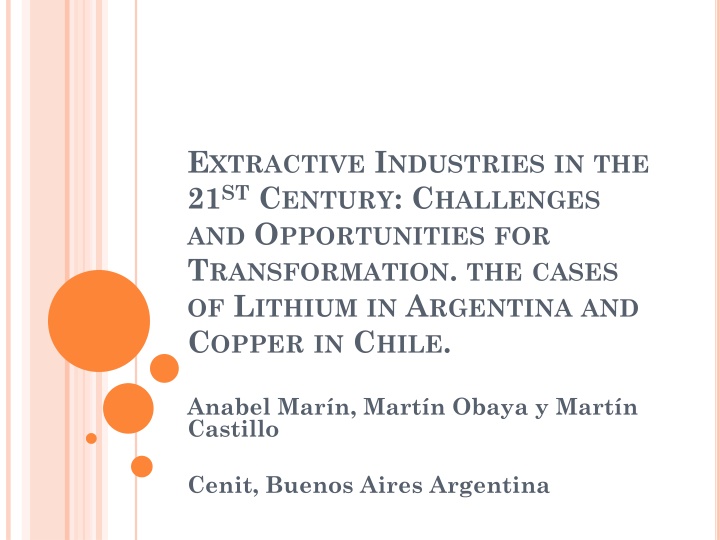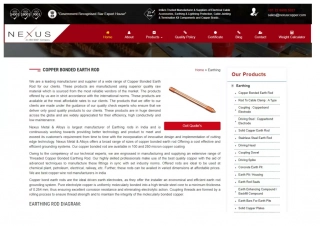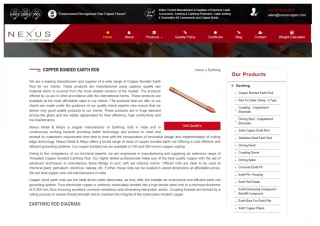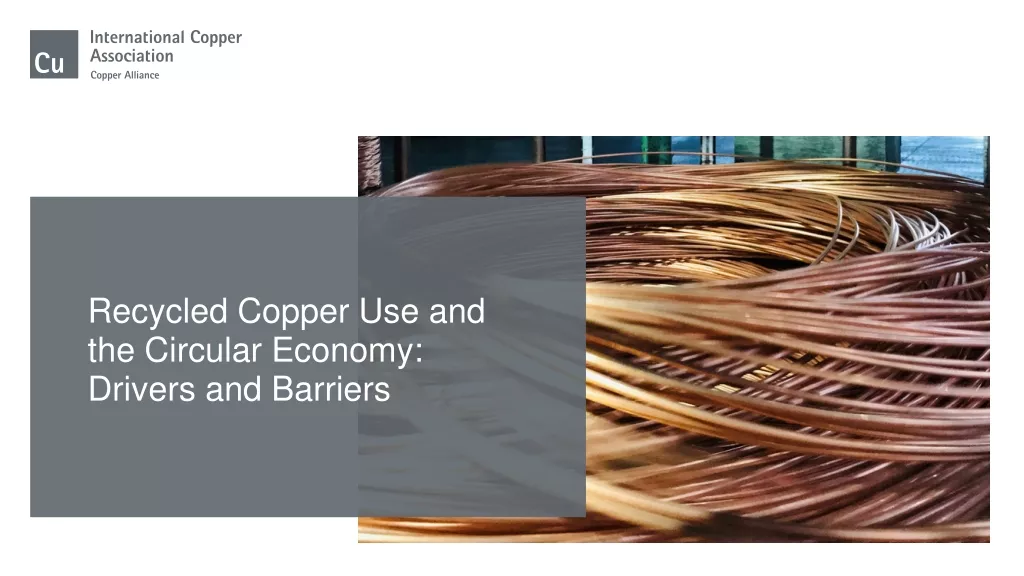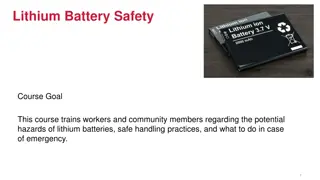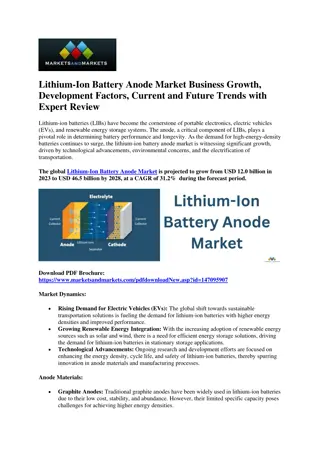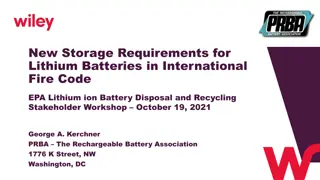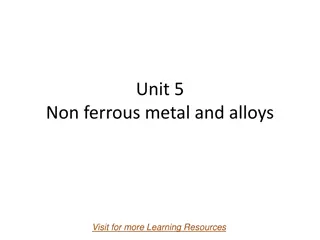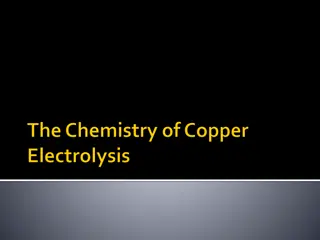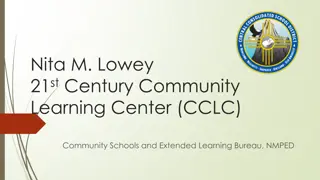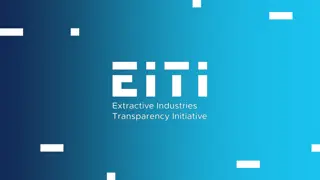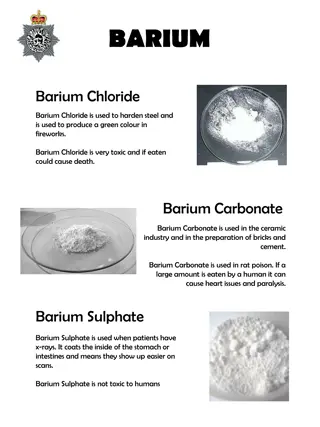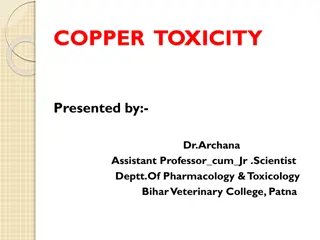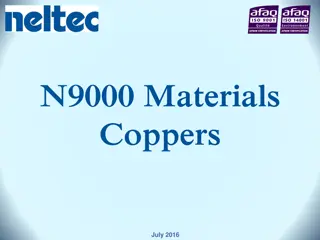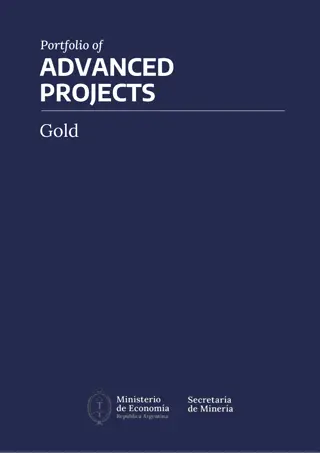Challenges and Opportunities in 21st Century Extractive Industries: Cases of Lithium in Argentina and Copper in Chile
Extractive industries, like copper and lithium in Latin America, face significant challenges and pressures for transformation. This research delves into the opportunities and obstacles for change, exploring the socio-technological transitions framework. By discussing the transformation potential for the copper industry in Chile and the lithium industry in Argentina, the study aims to generate new insights, raise questions, and pave the way for further research.
Download Presentation

Please find below an Image/Link to download the presentation.
The content on the website is provided AS IS for your information and personal use only. It may not be sold, licensed, or shared on other websites without obtaining consent from the author.If you encounter any issues during the download, it is possible that the publisher has removed the file from their server.
You are allowed to download the files provided on this website for personal or commercial use, subject to the condition that they are used lawfully. All files are the property of their respective owners.
The content on the website is provided AS IS for your information and personal use only. It may not be sold, licensed, or shared on other websites without obtaining consent from the author.
E N D
Presentation Transcript
EXTRACTIVE INDUSTRIES IN THE 21STCENTURY: CHALLENGES AND OPPORTUNITIES FOR TRANSFORMATION. THE CASES OF LITHIUM IN ARGENTINA AND COPPER IN CHILE. Anabel Mar n, Mart n Obaya y Mart n Castillo Cenit, Buenos Aires Argentina
PROBLEM AND OBJECTIVE OF THE RESEARCH Extractive industries face important challenges There are increasing pressures for transforming these industries Based on the theoretical framework of socio- technological transitions opportunities and challenges for transformation in two cases of extractive industries in Latin America: copper and lithium we analyse The article is explorative in nature, seeking to experiment with the framework, to rise new issues and questions, and to open up avenues of research
STRUCTURE OF THE PRESENTATION Introduction to the theoretical framework of socio-technological transitions. Research questions Research design and cases Opportunities and challenges for transforming the copper industry in Chile Opportunities and challenges for transforming the lithium industry in Argentina Conclusions
THE FRAMEWORK OF SOCIO-TECHNOLOGICAL TRANSITIONS: Conventional economics show limitations to explain change, transformations Evolutionist authors have providing interesting analytical tools Transition studies, start there but, interested in how to encourage transitions towards more sustainable regimes, provide new insights: They offer a wider notion of technological regime and paradigm Evolutionist emphasize the importance of accumulated knowledge, existing artifacts, and firm routines in explaining change, Transitions studies provide more importance to issues such as user relations, policy institutions, regulations, and the cultural meanings associated with a technological practice
THE FRAMEWORK OF SOCIO-TECHNOLOGICAL TRANSITIONS: A CONTRIBUTION TO THE ANALYSIS OF SOCIO-TECHNOLOGICAL TRANSFORMATION Compared to evolutionism, the framework put more emphasis on the role of human agency: Transitions researchers emphasize how neither innovation or selection processes should be understood in overly deterministic ways. Actors have and make choices about: the kinds of knowledge and artefacts they wish to develop; they anticipate and influence the reactions of others; and try and modify selection environments so as to increase the chances of survival of the products of their innovative efforts.
THE SOCIO-TECHNOLOGICAL FRAMEWORK: A MULTI-LEVEL PERSPECTIVE Regimes constitute stable institutionally embedded configurations of technological artefacts, practices, institutions and rules sunk costs, technological convergence and existing platforms, user practices, cognitive routines, political power, vested interests, cultural meanings Landscape relatively exogenous social, economic, cultural and physical contexts in which both regime and niche level activities occur. They open opportunities fro change E.g. changes in world economic conditions (e.g. decrease in the price of commodities) Innovations develop in niches, which are experimental spaces, protected from the competitive pressures of the regime strategic R&D, subsidies, consumers support
THE SOCIO-TECHNOLOGICAL FRAMEWORK: A MULTI-LEVEL PERSPECTIVE
DIFFERENT TYPES OF SOCIO-TECHNOLOGICAL TRANSFORMATION PATHWAYS Type of landscape pressures Strong and adaptive regime imports nondisruptive innovativons to guarantee its own survival. Regime actors survive. Transition pathways Level of maturity of niches Dynamic and results E.g. transition from the septic tank system to the sewer system in the Netherlands in the nineteenth century; organic food movement. Underveloped niches Moderate pressures Weak transformation Regime is robust but adaptive. Progressive incorporation of niche innovations lead to a significant reconfiguration of the regime. Several symbiotic niche developments with strong potential to address regime problems Strong and abrupt pressures for change Reconfiguraton E.g transition from traditional plants to mass production in the United States. Landscape pressures open up possibilities for niche initiatives to reach the regime. Regime actors defend themselves. If niche innovations manage to succeed, the regime undergo substantial changes and its main actors are replaced. Niches are well developed. However, they are not able to reach the regime, as this remains stable and consolidated Strong pressures Technological substitution E.g: transition from sailing ships to steam ships. Landscape pressure erode and cause the colapse of the regime. Main actors lose faith in it. Destabilization creates uncertainty about the new rules. Niches compete for resources and social support until one of them emerges as the new dominant regime. Multiple niche initiatives at embryonic levels compete for resources De-alignment and re-alignment Strong pressures Historical examples: transition from horse carriages to cars.
RESEARCH QUESTIONS On the nature of landscape pressures for transformation Where do they originate? Are they strong? What kind of change do they favour: moderate, abrupt? On regimes How do they deal with pressures? Are they flexible to change? Do they have the capacity to deal with challenges and pressures for transformation? On niches What types of niches have been developed? How advanced are the initiatives within them? What actions have been taken to protect them from regime selection mechanisms? What is they nature in relation to regimes: symbiotic or disruptive? How do the three levels interact among them? JUST A EXPLOROTARY STUDY
RESEARCH DESIGN Case studies: good for new, under-researched phenomena and to explore how and why questions. Theoretically-driven selection of cases. The two selected cases are facing significative challenges and are currently engaged in transformation However, they are very different: Lithium in Argentina, a small but emergent sector Copper in Chile, a long-established and mature industry with strong weight on the domestic economy
RESEARCH DESIGN Data collection was based on literature and semi-structured interviews with key informants in each sector from: Mining companies, producers and suppliers Researchers from the scientific system Policy makers Consultants Civil society (still to do some more)
THE CASE OF COPPER: THE REGIME Regimen long-stablished Very powerful and important within the country Chile main copper producer, 30% of world market, Copper explains 8% of GDP, 16% of fiscal incomes, 50% exports Dominated by a small number of large actors, mostly transnational, BUT CODELCO With strong presence of state, market driven perspective, Recently expanded, gained importance But questioned, with strong pressures for change
THE CASE OF COPPER: PRESSURES FOR CHANGE Two types of pressures: From pressures within the regime: productive, technological Increasing costs, drop in productivity, problems to access key inputs From outside: of development Need to augment local linkages, incentive local technological capabilities, reduce negative environmental impact and reduce social conflicts
THE CASE OF COPPER: REACTION OF THE REGIME Aware of the need for change Trying to developing articulated responses, through public and private partnerships La Alianza Valor Minero Programa Nacional de Miner a Alta Ley Programa de proveedores de clase mundial But not very strong commitments from private companies or public sector Reduced investments Several responses in course, but all very incipient
THE CASE OF COPPER: NICHES (EXAMPLES) Responding to productive and technological challenges Subterraneous mining: Initiative: Public company, Codelco World class innovation, the largest mining project developing this technology in the world Human capital: Training human resources of excellence (the idea is to take researcher from 350 to 600) Match supply and demand of skills
THE CASE OF COPPER: NICHES (EXAMPLES) Responding to developmental challenges: Programme World Class Suppliers Initiative of BHP, then Coodelco and others To match demands of mining companies, with local capabilities Reached 600 out 3000 suppliers Developing testing spaces Tailing tanks Limited responses to social problems, dialogue
THE CASE OF COPPER: POSSIBILITIES OF TRANSFORMATION Regimen under considerable stress due to maturity, responding, adaptative Consensus within the regime and niches are very incipient, need to to get More commitment from private companies, abandon short term bias in vestment decisions (e.g. problems PWCS, Marin, Olivary, Pietrobelli, 2016) Continuity of policy support Take care of institutional problems, e.g. IPR But all responses are from inside, niches are very symbiotic, Not path breaking niches that address sustainability challenges
THE CASE OF LITHIUM: THE REGIME Emergent Potentially, in the next few years, Argentina may become the larger producer of lithium in the world Growing importance, but still insignificant weight in the domestic economic structure Dominated by a small number of large transnational companies Extractive-oriented approach Normative framework set rules favouring extractive activities ExceptionJujuy (development-oriented policy approach) Local communities involved
THE CASE OF LITHIUM: PRESSURES FOR CHANGE Two types: Productive/technological: pressures from within the regime: Local specificities: need to adapt technology to local environment. Developmental: landscape pressures: The curse of mining industry. Pressures for increasing linkages with the socio-economic fabric Environmental pressures: the problem of water Social tensions with local communities. Social license.
THE CASE OF LITHIUM: REACTION OF THE REGIME Limited due to the peripheral, disarticulated, character of the regime dominated by transnational subsidiaries specialised in extractive activities, with little linkages with strong local actors Domestic subsidiaries, dominating actors, with limited capabilities, rely on headquarters Public institutions and local actors starting to develop initiatives, with little resources and sustained support E.g. province of Jujuy. Lithium as a strategic natural resource . JEMSE Industrial park for mining and logistic services
THE CASE OF LITHIUM: NICHES Niche Challenges Actores clave Iniciativas Geology and chemical composition of the brines Upstream niches: Productive and technological issues Research projects to improve knowledge on the geology and dynamics of brines (UNJU-CONICET) Transnational extractive companies Extraction and production processes Creaci n del Centro de Investigacio nes Cient ficas y Tecnol gica s sobre el Litio (CONICET) Resources exploitation INQUIMAE Environmental issues CONICET Basic and applied research on bateries: i) Catching-up initiatives: lithium-ion ii) Frontier initiatives: lithium-air Universidad Nacional de Jujuy Weak linkages and low added value FAMAF INIFTA Y-Tec CNEA Extractive model Downstream niches: development Production of lithium- ion battery Research on lithium as a fuel for nuclear fusion Production of nuclear fusi n energy
THE CASE OF LITHIUM: UPSTREAM NICHES Addressing the productive and technological challenges: Scientific and technological community (niches): Extracting processes Geological studies Research projects to improve knowledge on the geology and dynamics of brines (UNJU- CONICET)
THE CASE OF LITHIUM: DOWNSTREAM NICHES Addressing the socio-development pressures. Batteries: Lithium-ion batteries: FAMAF (UNC) / INIFTA (UNLP) / Y-TEC Tablets, computers Energy storage Vehicles Lithium-air batteries: INQUIMAE (UBA) Energy for nuclear fusion: UNJU, CNEA Role of Lithium Institute (CONICET) Limited responses to environmental and social problems, corporate responsibility
THE CASE OF LITHIUM: NICHES LEVEL OF DEVELOPMENT AND CHALLENGES. POSSIBILITIES OF TRANSFORMATION Regimen under stress for change, due to the emergent character, less acute than copper Responses coming from actors coming from outside the nucleus of the regime, Incipient niches, very dependent on public policies, fine, but Weak development of public tools (e.g. delay and budget cuts in Lithium Institute). Need to get support and align public/private actors (e.g. to commercialise batteries) Need to develop a strategic vision at government level (isolated initiatives, e.g. law projects). E.g. batteries, normative frame does not provide location advantages A new type of niche??
SUMMARY, PRELIMINARY CONCLUSIONS FROM THE TWO CASES: DIFFERENT TYPES OF NICHES Types of transformations, types of niches
CONCLUSIONS The two regimes under considerable pressures for change and transformation from pressures that challenge the sustainability of the activities in the medium term (more copper) The topic is very important! The framework potentially important to help to understand the phenomena The two regimes are reacting differently due to differences across: History and characteristics of the regimes Type of pressures that are receiving Type of niches being developed Different types of transformations possible?
Dimensions for change Copper Lithium Forces inducing change Strong, important, linked to maturity Coming from within and out the regime Consolidated, adaptive, semi- periferic, semi transnational Medium, linked to emergent character Coming from within and out the regime Emergent, unstable, transational/periferic Type of regime Reaction of the regime Private/public consensus High number of initiatives, real commitment not so clear Incipient/untested, symbiotic, path-repairing, not path- breaking Medium, deriving from companies, public and private Need to develop more commitment by private Limited, chaotic Lack of articulation and consensus between actors Incipient, path-repairing, path creating, symbiotic (not path breaking) Medium, deriving from public funds Unstable commitment Type of niches, level of development Protection Interactions regime/niches TYPE OF TRANSFORMAT ION High, harmonic Disarticulated, chaotic isolated responses WEAK or RADICAL TRANSFORMATION? RECONFIGURATION OR WEAK TRANSFORMATION??
CONCLUSIONS Areas of future research We need to investigate more deeply and carefully: Responses of the regime and limitations to respond The niches, identify more Their nurturing and empowerment strategies, to affect the regime and transform it in any of the possible directions Network development, resources and support capture, Barriers to expand (capabilities, vested interests, power..) The possibilities of less symbiotic niches, with higher capacity of divergent solutions, and transform Interactions, niches regimen: limitations imposed by regimes to niches, Need to reflect on the nature of changes required to address the main challenges. Would incremental changes, encouraged by dominant actors within existing regimes be enough? or Do we require radical changes?
CONCLUSIONS: CHALLENGES FOR INNOVATION AND TECHNOLOGY POLICY Challenges for innovation and technology policy Need to adopt new approaches, be ahead of the need to transformations Introduce pressures for change and create opportunities for change Supporting niches, that experiment with new and different kinds of ideas. The question is Incremental, or radical?
CONCLUSIONS Contributions for social, economic and/or environmental sustainability of extractive industries. Need to support projects that address social and environmental problems But approaching them as niches, with possibilities to develop innovations that can contribute to improve or change the regime Not social and corporate responsibility No social policy Main lessons for LAC. Nee to develop tools, policies that address the character perierica an transation o the regimes
